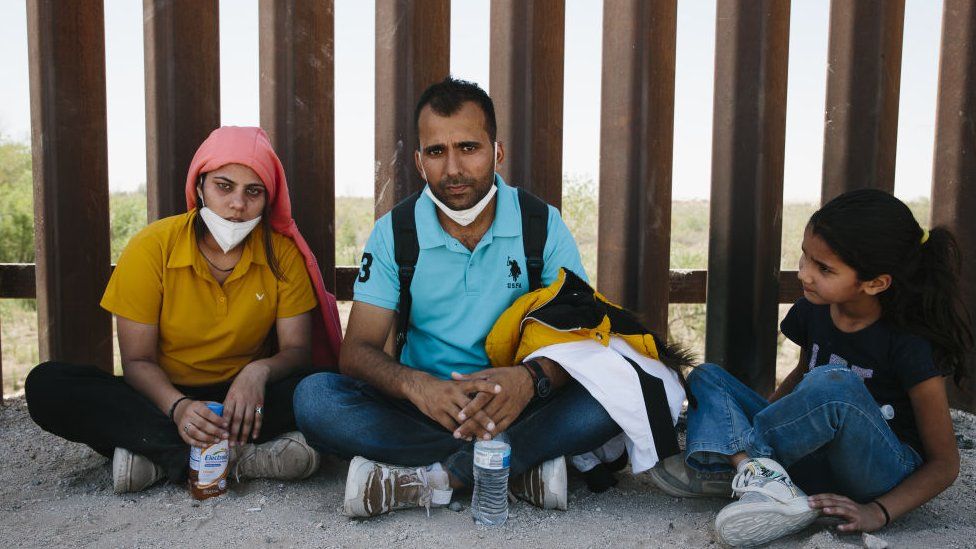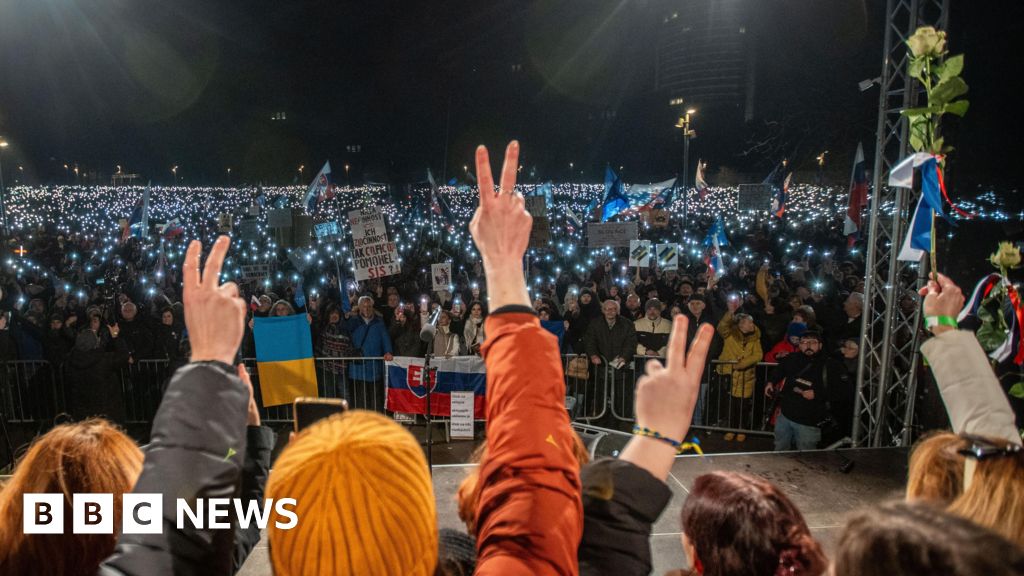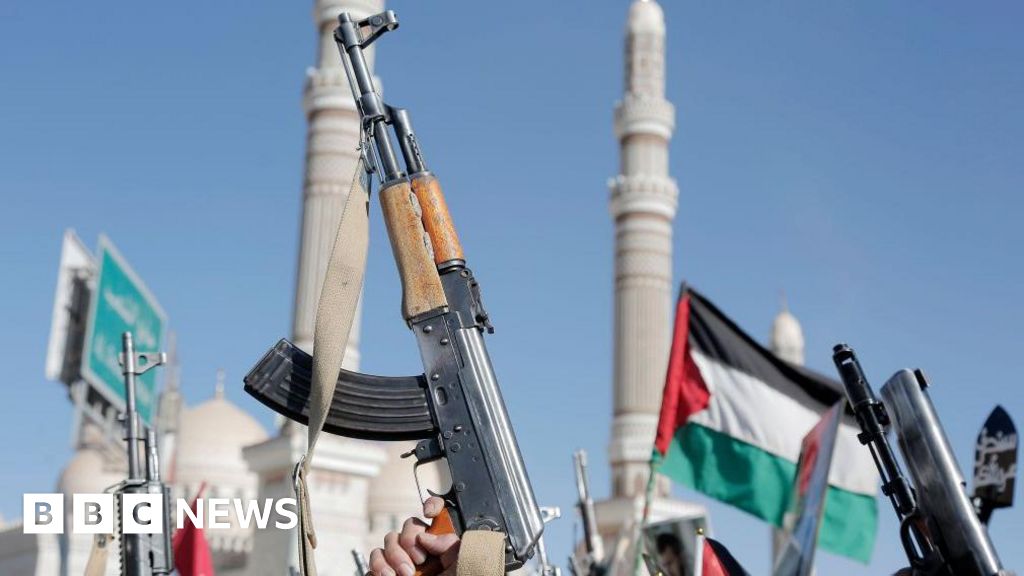ARTICLE AD BOX
 Image source, Getty Images
Image source, Getty Images
An India family seeking asylum in the US at the Arizona-Mexico border on 20 May
By Bernd Debusmann Jr
BBC News
As an openly gay man living in a deeply conservative part of India's Punjab, life had long been hard for Jashan Preet Singh.
Over the years, Mr Singh, 34, had grown accustomed to daily discrimination in his hometown of Jalandhar - harassment and beatings doled out by his neighbours, and a family that had largely turned its back on him.
But what happened late last year was different.
"There were 15 or 20 people who tried to kill me," he told the BBC from Fresno, California. "I ran away from there and saved my life. But they cut various parts of my body." The attack left him with a mutilated arm and a severed thumb.
Mr Singh's escape set him on a journey that took him through Turkey and France. Eventually, it led him to the US-Mexico border, nearly 8,000 miles (12,800km) away, where he crossed into California to begin a new life in the America.
He is not alone - for years, the arrival of Indian migrants in the US has been slow but steady, amounting to dozens or hundreds each month.
This year, however, the figures have spiked.
Since the beginning of the 2022 fiscal year that started last October, a record 16,290 Indian citizens have been taken into US custody at the Mexican border. The previous high of 8,997 was recorded in 2018.
Experts point to a number of reasons for the increase, including a climate of discrimination in India, an end to pandemic-era restrictions, a perception that the current US administration is welcoming to asylum seekers and the ramping-up of previously established smuggling networks.
While some migrants are coming to the US for economic reasons, many are fleeing persecution back home, said Deepak Ahluwalia, an immigration lawyer who has represented Indian nationals in Texas and California.
The latter group range from Muslims, Christians and "low-caste" Hindus to members of India's LGBT community who fear violence at the hands of extreme Hindu nationalists, or supporters of secessionist movements and farmers from the Punjab region, which has been shaken by protests since 2020.
Conditions for many of these groups have deteriorated in recent years, international observers say.
Tough decisions
For Mr Singh, the decision to leave his country wasn't an easy one. He first considered moving to another Indian city, but feared that he would be treated just as badly.
"The culture is not open-minded for gay people," he said. "Being gay over there is a big issue."
India only decriminalised gay sex in 2018 and same-sex marriage remains illegal.
His brother soon put him in touch with an India-based "travel agency" - part of a sophisticated and expensive smuggling network that took him first to Turkey - where "life was very tough" - and then to France, where he briefly considered staying but was unable to find work. The entire trip took him just over six months.
Image source, Getty Images
Image caption,Indian nationals being processed by US immigration officials after crossing the border on 26 September
Eventually, his "travel agent" arranged for him to join a small group of Indians headed to the US, where many - Mr Singh included - had family members.
"He charged us a lot of money," Mr Singh said. "[But] from France he got me to Cancun, and from there to Mexico City and north."
A difficult journey
Immigrants such as Mr Singh often see the US as "the ultimate gateway" to a better life, said Mr Ahluwalia, the lawyer.
The enormous distances involved, however, make the trip to the US extremely challenging.
Traditionally, Indian migrants who arrive at the US-Mexican border use "door-to-door" smuggling services, with journeys arranged from India to South America. They are often guided the entire way and travel in small groups with their fellow countrymen who speak the same language, rather than individually or with only family members.
These networks often begin with India-based "travel agents" which outsource parts of the journey to partner criminal groups in Latin America.
Jessica Bolter, an analyst at the Washington DC-based Migration Policy Institute, said that the number of Indian migrants is also rising as a result of a "ripple effect" that takes place when those who have used these services successfully recommend them to friends or family back in India.
"It naturally expands and draws more migrants," she said. "Of course, that doesn't happen without migrants wanting to leave originally."
The experiences of Manpreet - a 20-year-old from Punjab who asked that only his first name be used - are typical of those who have taken the southern route in the past. A vocal critic of India's ruling BJP (Bharatiya Jannata Party), he fled the country after being persecuted for his political beliefs.
"From Ecuador I took a bus to Colombia, and from Colombia I took a bus to Panama," Manpreet recalled in an interview with the BBC from California. "From there, via a boat, I [went to] Nicaragua and Guatemala, and then Mexico and entered the US."
Even guided by seasoned smugglers, the trip to the border is often one that is fraught with dangers, including robberies and extortion at the hands of local gangs or corrupt authorities or extreme weather, injuries and illness.
These dangers were highlighted in 2019, when a 6-year-old Indian girl from Punjab was found dead in the scorching desert near the border town of Lukeville, Arizona - a case that made headlines in India. It was later reported that she died in temperatures of over 42 C (108 F) after her mother left her with a group of other Indians to go search for water.
Image source, Getty Images
Image caption,Indian migrants at a humanitarian camp in Panama in 2019
An uncertain fresh start
Once in the US, migrants such as Mr Singh begin a long legal process to apply for asylum. Most often, it begins with what US officials term a "credible fear interview," in which they must convince authorities they face persecution if returned home.
"This first step is the most important," Mr Ahluwalia explained. "If he [the officer] deems there is no credible fear, your case is never going to move forward. That is very catastrophic."
If an asylum officer believes these fears are credible, would-be asylum seekers are likely to be issued a notice to appear before an immigration judge who will consider their request.
The process is lengthy - with wait times of several years now the norm across the US - with no promise of a positive outcome.
Mr Singh, for his part, has been in the US since late June. At the moment, he is saving up money to hire a lawyer.
While his long-term future in the US is by no means guaranteed, and his journey was long, it was better than the alternative, he said.
"I would always fear for my life," he added. "Since I have been here, I have never felt such a thing."

 2 years ago
39
2 years ago
39









 English (US) ·
English (US) ·